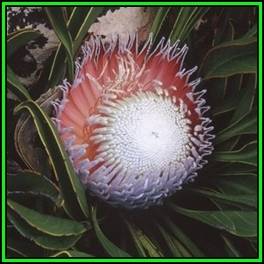
Protea cryophila Seeds - Indigenous Endemic Cut Flower Fynbos Shrub, New
Check my rate
| Main centres: | 1-3 business days |
| Regional areas: | 3-4 business days |
| Remote areas: | 3-5 business days |

| Main centres: | 1-3 business days |
| Regional areas: | 3-4 business days |
| Remote areas: | 3-5 business days |
Protea is both the botanical name and the English common name of a genus of South African flowering plants, sometimes also called sugarbushes in Eglish and Suikerbos in Afrikaans. The genus Protea was named after the Greek god Proteus, who could change his form at will, because plants within this genus have such a wide variety of forms. The Proteaceae family to which proteas belong is an ancient one. Its ancestors grew in Gondwana, 300 million years ago. Most protea occur south of the Limpopo River. 92% of the species occur only in the Cape Floristic Region, a narrow belt of mountainous coastal land from Clanwilliam to Grahamstown, South Africa. They are evergreen shrubs or trees usually found in fynbos. Protea blossoms make excellent cut flowers, keeping their colour for up to three weeks.
Protea cryophila is a South African endemic species from the Western Cape Province where it can be found growing on mountain summits on Cederberg sandstone fynbos. Commonly known as Sneeublom or Sneeuprotea in Afrikaans and Snow Protea or Snowball Protea in English, this species has a near threatened status. It is rare and only confined to a few peaks. It grows one main stem that is mainly hidden underground. Many side-branches radiate out from the main stem of a mature specimen and interlock densely around it to form a spreading shrub of more than 2.5 m in diameter. Above-ground branches may reach heights of half a meter, although leaves and flowerheads may be produced at ground level. |